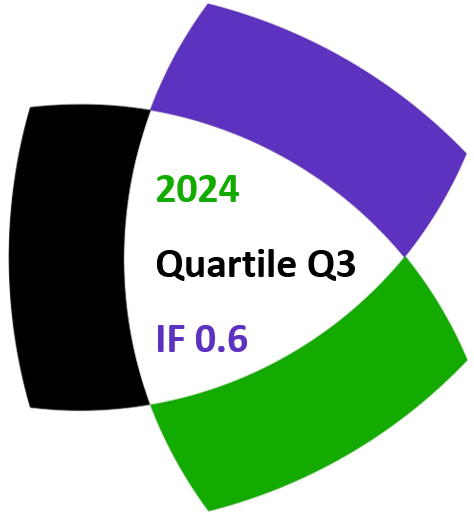J. Chimpanzo, P. Catarino and M. V. Otero-Espinar
Notes on Number Theory and Discrete Mathematics
Print ISSN 1310–5132, Online ISSN 2367–8275
Volume 31, 2025, Number 1, Pages 41–53
DOI: 10.7546/nntdm.2025.31.1.41-53
Full paper (PDF, 212 Kb)
Details
Authors and affiliations
J. Chimpanzo ![]()
![]()
1 Department of Exact Sciences, Higher Polytechnic Institute of Soyo
Zaire, Angola
2 CMAT-UTAD, Polo of CMAT, University of Minho
4710-057 Braga, Portugal
P. Catarino ![]()
![]()
3 Department of Mathematics, University of Trás-os-Montes e Alto Douro
5000-801 Vila Real, Portugal
4 CMAT-UTAD, Polo of CMAT, University of Minho
4710-057 Braga, Portugal
M. V. Otero-Espinar ![]()
![]()
5 Departamento de Estatística, Análise Matemática e Optimización,
Universidade de Santiago de Compostela
15782 Santiago de Compostela, Spain
6 Galician Center for Mathematical Research and Technology
15782 Santiago de Compostela, Spain
Abstract
In this article, we introduce the tridimensional version of the Lucas-balancing numbers based on the unidimensional version, and we also study some of their properties and sum identities.
Keywords
- Balancing numbers
- Lucas-balancing numbers
- Tridimensional Lucas-balancing numbers
2020 Mathematics Subject Classification
- 11B39
- 11B83
References
- Behera, A., & Panda, G. K. (1999). On the square roots of triangular numbers. The Fibonacci Quarterly, 37(2), 98–105.
- Catarino, P., Campos, H., & Vasco, P. (2015). On some identities for balancing and cobalancing numbers. Annales Mathematicae et Informaticae, 45, 11–24.
- Chimpanzo, J., Catarino, P., Vasco, P., & Borges, A. (2024). Bidimensional extensions of balancing and Lucas-balancing numbers. Journal of Discrete Mathematical Sciences and Cryptography, 27(1), 95–115.
- Liptai, K. (2006). Lucas balancing numbers. Acta Mathematica Universitatis Ostraviensis, 14(1), 43–47.
- Olajos, P. (2010). Properties of balancing, cobalancing and generalized cobalancing numbers. Annales Mathematicae et Informaticae, 37, 125–138.
- Panda, G. K. (2007). Sequence balancing and cobalancing numbers. The Fibonacci Quarterly, 45(3), 265–271.
- Panda, G. K. (2009). Some fascinating properties of balancing numbers. In: Proceedings of Eleventh International Conference on Fibonacci Numbers and Their Applications, Congressus Numerantium, 194, 185–189. Braunschweig, Germany. Utilitas Mathematica.
- Panda, G. K., Komatsu, T., & Davala, R. K. (2018). Reciprocal sums of sequences involving balancing and Lucas-balancing numbers. Mathematical Reports, 20(2), 201–214.
- Patel, B. K., Irmak, N., & Ray, P. K. (2018). Incomplete balancing and Lucas-balancing numbers. Mathematical Reports, 20(1), 59–72.
- Ray, P. K. (2009). Balancing and Cobalancing Numbers. Doctoral Thesis, National Institute of Technology Rourkela, India.
- Sloane, N. J. A. (2023). The On-Line Encyclopedia of Integer Sequences. Available online at: https://oeis.org.
Manuscript history
- Received: 22 May 2024
- Revised: 28 January 2025
- Accepted: 28 March 2025
- Online First: 2 April 2025
Copyright information
![]() Ⓒ 2025 by the Authors.
Ⓒ 2025 by the Authors.
This is an Open Access paper distributed under the terms and conditions of the Creative Commons Attribution 4.0 International License (CC BY 4.0).
Related papers
Cite this paper
Chimpanzo, J., Catarino, P., & Otero-Espinar, M. V. (2025). On tridimensional Lucas-balancing numbers and some properties. Notes on Number Theory and Discrete Mathematics, 31(1), 41-53, DOI: 10.7546/nntdm.2025.31.1.41-53.


